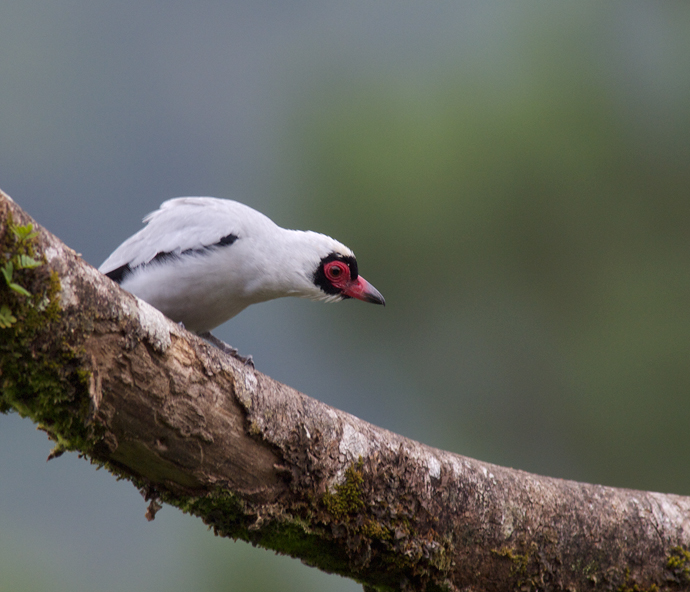Bird of the Week – Masked Tityra
Continuing with tropical birds for a while, this is a Masked Tityra, one of the three Tityra species.
There’s some dispute as to classification of the Tityras; some ornithologists think they are flycatchers; others put them in a group by themselves. Regardless, they are striking birds and immense fun to see in the field.
More bird photos at Frozen Feather Images.

Oh, dear. Bless its heart.
Now I’m wondering what this fellow is watching so intently?
and are the undersides of his wings black or is that just a shadow?
and how big this guy is, and also, too,
what the females look like that they would find this fellow alluring?
Something mysterious there is about a mask.
Maybe that explains it.
I look forward to these field~trips all week long.
Curiosity may have killed the cat, but curiosity makes my world go ’round.
No wonder I found my life’s work in public schools, and especially our libraries. 🙂
Thanks again, WC, for taking us bird~watching with you every weekend.
hahahahahacawCawCAW!
thatcrowwoman
For all of you curious cats and mudpups out there,
here’s a link to my favorite resource (after WC) for all questions avian and ornithological:
http://birds.cornell.edu/Page.aspx?pid=1478
Just answered most of my own questions.
Cornell sponsors the Great Backyard Bird Count and other Citizen Science Projects.
My once-upon-a-6th-grade science classes participated enthusiastically,
and many of those students still do…with their own children.
There is something for Citizens of all ages, so go ahead, take another field trip.
your reference librarian,
thatcrowwoman
I love that site too !
Getting to hear the audios is up there for learning more about birds, too. Also. Even and as well
As it turns out, he’s looking at a female…
I thought that attitude, that posture, that mien, and that laser-like focus looked familiar.
Now I recognize That Look from years spent in high school and middle school classrooms, hallways, libraries, and activities.
Should have known!
hahahahahacawcawcawcaw!
😀
I believe that I have spotted several of this specie on those red eye flights to the lower 48. ; -)